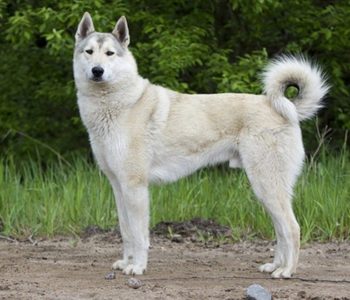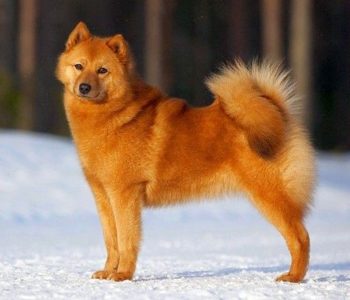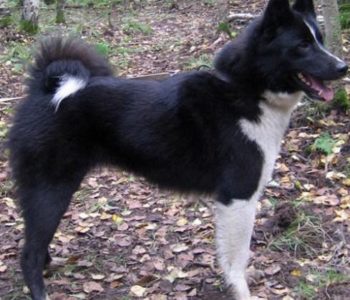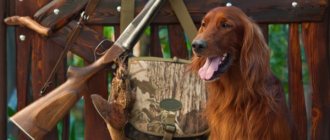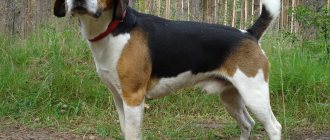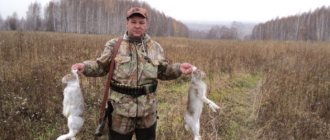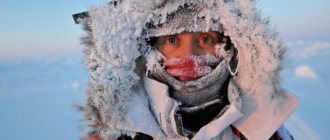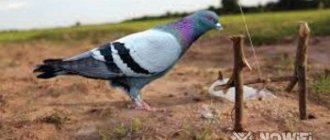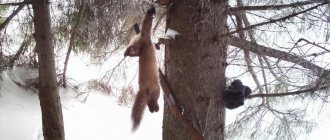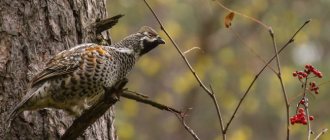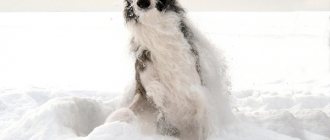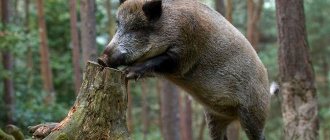- September 3, 2018
- Dogs and hunting with them
- Oleg Petrov
Training huskies is a difficult and responsible task. You need to carefully approach the choice of a dog, its pedigree, ask the breeders about the characteristics of its health, whether there are any special conditions for its maintenance and training. Buying a Laika puppy from you should not be difficult, since this is a very common breed. First he needs to prepare a corner in a new place, which will be specially designed for him.
Breed Features
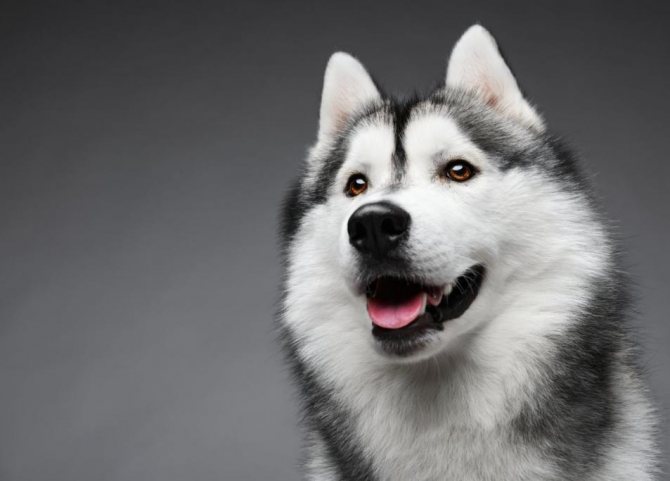
Training huskies is not an easy process, but anyone can do it if you strictly follow the instructions and directions. The ideal place to live for any hunting dog is the street. So this breed is, first of all, suitable for those who live in a private house. The puppy can be placed in the most ordinary wooden booth in a closed enclosure. This is very convenient because the dog will not sit on a leash, but at the same time recognizes its territory. If in the future you plan to take your husky with you hunting, then you need to train it on a specific animal.
Laika training for hunting must be carried out, taking into account that this is a very independent and freedom-loving breed. They are very inquisitive and during a walk they can run far from their owner in order to explore a new territory, get carried away by the surrounding dogs during this time and even get lost. Unfortunately, these unpleasant situations happen quite often with likes.
With their external characteristics, hunting huskies compare favorably with many other dogs due to their beauty, grace, large fluffy tail, which rolls in a roll, as well as bright coloring. The weight of an adult dog varies from 20 to 30 kg, and its height on average reaches 60 cm at the withers.
An adult hunting husky can always be distinguished by its ears, which are in an erect position, thick hair in the “collar” area, an elegant figure, an oval head, and a strong build.
Hunting qualities
Laikas are often used in hunting due to their outstanding qualities and special physical characteristics. This breed has a very well developed sense of smell, which it uses to find prey. Thanks to her sense of smell, she is able to detect the smell of future prey approximately 100 meters from the source. In addition, these dogs have very well developed hearing; they can hear a person sneaking 100 meters away.
Professional hunters divide the Laika breed into three varieties. These are hounds - dogs that follow the trail of an animal and primarily use their sense of smell when hunting. There are also spirit huskies, which, in addition to their sense of smell, include a rare natural hearing, thanks to which they very clearly determine where the prey will come from and head in that direction. Low-sense animals are susceptible to the smell of animal tracks; they walk along them, sniffing, practically without raising their heads.
The husky dog has sense of smell - an innate quality. The owner only needs to do everything possible so that it does not weaken. For example, damage can be caused by arranging repairs in the immediate vicinity of its habitat. Due to the strong smell of chemicals (varnish, paint), her senses can be seriously weakened. Therefore, if there is an urgent need to carry out repairs, the husky needs to be relocated for this time.
In addition, dogs of the Laika breed are able to search for prey very quickly. It can be constantly developed by training and coaching the dog. This quality increases depending on how physically prepared and developed the husky is. For example, when a puppy suffers from rickets, it should not be taken for a long walk so that it can recover. Training huskies to quickly search for prey is instilled in the puppy from the age of 5 months.
The husky has a sonorous and loud voice that can be clearly heard throughout the forest. To preserve it, you need to teach the puppy to remain alone from childhood, so that in the future he will not lose his voice when he sits on a chain. You should also take care of the collar, which should be the right size and not tighten the throat. So, the hunter will be able to find hunted prey, focusing on the barking of his dog. This is another quality that is formed in the process of training a husky.
Hunting dogs' tracking of prey is divided into ground and mounted. When hunting, you need to take both types - both when the prey moves on the ground and when it runs away through the trees.
When training a husky puppy, it is important to cultivate such a quality as viscosity. They develop only as a result of long training. Dogs with good viscosity search for an object, chase it and bark until the owner gives the appropriate command. Otherwise, they will stop barking whenever they please.
It is important that the dog obeys all commands without question. This quality needs to be cultivated when training a husky puppy. She must return upon request, otherwise a fruitful hunt will not work.
It is important that the dog is restrained towards the caught prey. She should not run with the caught object, gnaw or throw it, tear it with her teeth or refuse to give it to the hunter.
Finally, another important quality is dexterity. The husky will especially need it when hunting large animals. The dog must have an instant reaction, the ability to dodge at the right moment, jump, so as not to turn into a victim of an angry bear or wild boar.
Briefly about the breed: character, psyche, characteristics
Laika is not a separate breed, but a group of separate species, united by common features, physiology, and purpose. Laika of any kind is a self-sufficient, freedom-loving and independent dog, with a strongly expressed hunting instinct. There are five types of hunting huskies, which are very popular among Russian hunters.
Table 1. Breeds included in the husky group
| Illustration | Breed |
| West Siberian Laika | |
| East Siberian Laika |
| Yakut Laika |
| Karelo-Finnish Laika |
| Russian-European Laika |
As you can understand from the comparative table, all huskies are stocky, fairly large dogs, with erect, sensitive ears and a fluffy tail curled towards the hip or croup. These dogs were bred at different times and in different territories, in some places their blood was mixed, in others they did not intersect at all, but the Laikas have one purpose - to help a person on the hunt.
Unlike hounds and spaniels, which accompanied horse hunts or brought aquatic game, huskies are full partners of pedestrian hunters, and very often the positive outcome of the entire hunt for the animal depends on the skill of the dog. Therefore, it is very important to train your dog without relying only on natural instincts.
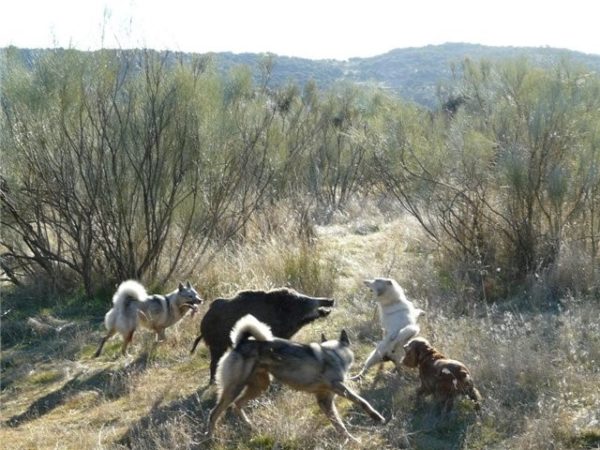
Laikas in the process of hunting a wild boar
Let us emphasize that huskies of any kind are exclusively working dogs; having such a pet without planning to go hunting is stupid. Laika will not become a companion or a guard of the territory, and its strong hunting instinct will bring a lot of trouble to an inexperienced person who bought a puppy “for beauty.”
Important point! Laikas require hours of daily walks in nature, as well as regular visits to training and hunting events. Otherwise, the animal will become uncontrollable, aggressive and nervous; the most common outcome of improperly keeping a husky is its escape. By the way, huskies often run away from owners who do not pay attention to their needs, and get caught by hunters, simply following the “call of nature.”

The owner of a husky must certainly be an experienced hunter
Likes and hunting qualities
Perhaps a hunter on foot cannot find a better dog than a husky. This breed harmoniously combines intelligence, high physical endurance, as well as excellent natural abilities for hunting. Professional hunters identify six main hunting qualities in huskies.
Quality #1. Flair.
We are not talking specifically about the sense of smell, but rather a combination of the senses of hearing, sight and smell. Adult trained huskies are able to detect an animal a hundred or even more meters away. At the same time, huskies are divided into those who find the smell of prey in the air (including if the animal is on a tree), those who follow only the trail, “reading” the smell from the ground, and those who use hearing and smell. Let us note that flair is an innate quality of a dog, and the owner’s task is not to spoil it. Thus, dogs lose their sense of smell if they do not go hunting for a long time, as well as with regular inhalation of strong odors (gasoline fumes, paint products, smoke).
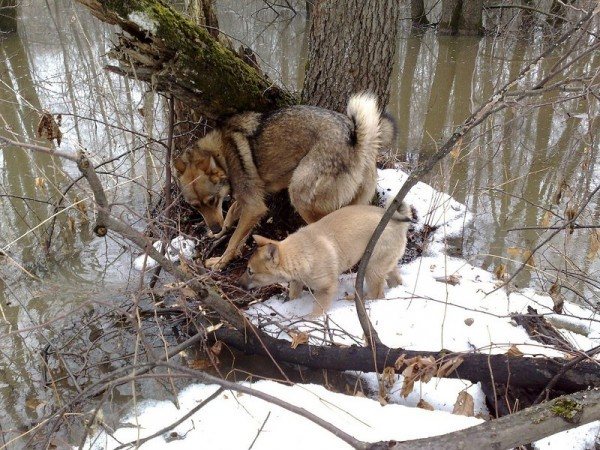
Sense of smell manifests itself in husky puppies at an early age
Quality No. 2. Search for prey.
Quickly searching for game is another innate quality inherent in huskies. But, unlike instinct, the owner can adjust the dog’s search capabilities by training and coaching it. An important role in this is played by caring for the animal, a well-designed diet, as well as the physical development of the dog.
Quality No. 3. Voice data.
The breed got its name from the word “barking” - this is how the dog signals to a person that it has discovered an animal. Therefore, you need to take care of your pet’s vocal cords - do not allow the dog to strain in vain, make sure that the collar does not squeeze the throat. Of course, the dog must make its voice strictly at the right moment, so as not to scare away the game - this is what the dog is taught during hunting training.
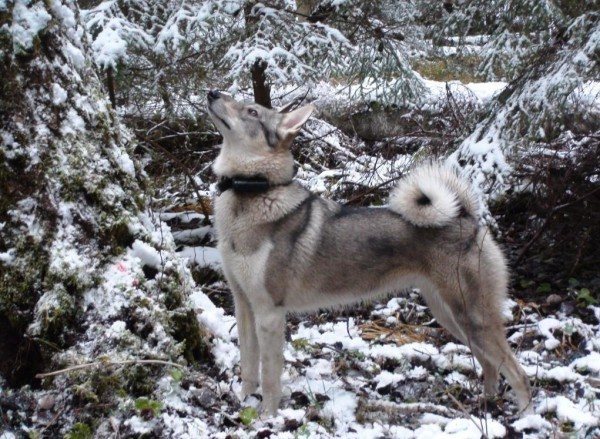
A second before the vote is cast
Quality No. 4. Attitude towards prey.
Perhaps the most important quality for a hunting dog. Laika must know that the prey must be carefully handed over to the owner. It is unacceptable for a dog to run away with caught game, tear it with its teeth or try to eat it. The animal must be accustomed to the fact that in the shortest possible time after an animal or bird is in its mouth, it must be taken to the feet of the owner.
Quality No. 5. Viscosity.
This hunting term means that the dog must chase the prey, watch it and bark until the owner gives the appropriate command. Dogs with poor viscosity hunt only out of excitement and stop the process of their own free will. For a good working dog such willfulness is unacceptable.
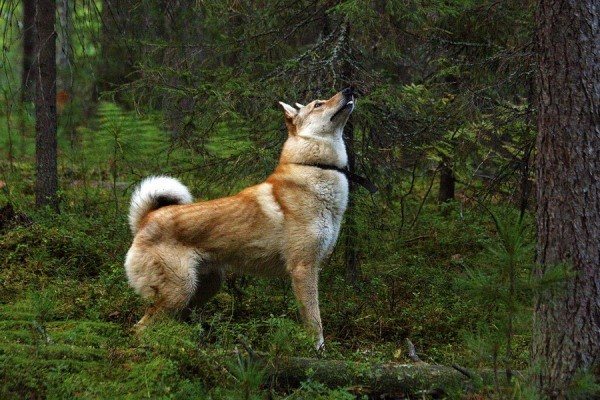
Laika must work in tandem with the hunter
Quality No. 6. Obedience.
Another important aspect for a hunting dog. The owner must make direct efforts to develop this skill by visiting a training ground from puppyhood. In addition to hunting qualities, the husky must know basic commands and listen to its owner unquestioningly.
Upbringing
Training a husky at home needs to start with proper upbringing. This is a very important point. The dog must be vaccinated, eat well, and be outdoors often. A dog can be trained to wear a collar from the age of 3 months.
One of the primary tasks for the owner is choosing the right nutrition. Initially, you need to decide whether you will feed your dog dry food or prepare it yourself.
Experienced experts advise feeding your puppy 6 times a day until he is 6 months old, and then reducing the number of meals to those times. It is enough to feed an adult dog twice a day. It is very important to pay due attention to water. It should always be clean and fresh, it should be changed at least three times a day.
The husky must eat meat every day. It is preferable to opt for beef, chicken, rabbit or turkey. A couple of times a week, fish may be included in the diet as a treat. She also needs dairy products - sour cream, cottage cheese, yogurt, milk.
Dairy products significantly diversify your pet's menu. From time to time it is advised to give a raw egg, fresh vegetables and fruits. Spicy and fried foods, potatoes, pasta, legumes, expired or spoiled foods are strictly prohibited.
Basics of training
Training a puppy must begin from the first hours of its presence in your home. If you choose a dog for yourself exclusively as a friend, and not a hunting companion, then it is enough to teach it the basic commands and make sure that it carries them out unquestioningly. First of all, during the game, teach your pet its name.
Then he must master the collar and later the leash. The first command that the husky understands is: “Near!” Over time, teach her to respond to the owner’s voice, the sound of a whistle, and follow the commands “Lie down!” and “Sit!”, bring the desired item. Laikas are also taught to swim in bodies of water through play; the dog cannot be forced into the water.
Laikas should be trained outdoors, ideally in the forest. The dog should definitely be encouraged, but not too flirted with it.
Nataska
Laikas have a hunting instinct from birth. They chase prey with pleasure, but for this dog to become your hunting assistant, you need to train a lot and for a long time.
It is worth starting training with a small animal. The best option is squirrel. After all, it is during the hunt for this animal that she will have to demonstrate most of the qualities necessary in the matter. This is surveillance, viscosity, voice. As soon as the dog learns to work well with protein, you can begin to master other animals. The few squirrels that your husky finds first need to be shot so that she can see the real fruits of her work. But do not let him tear the animal, and if you notice such behavior, stop it immediately.
One of the most popular breeds for hunting is the West Siberian Laika. Her training must be carried out on a specific animal. Only when she has mastered it, move on to another. Ideally, for the West Siberian husky, training should be carried out in pairs with a more experienced animal, which will not allow it to switch to a hare while chasing a wild boar.
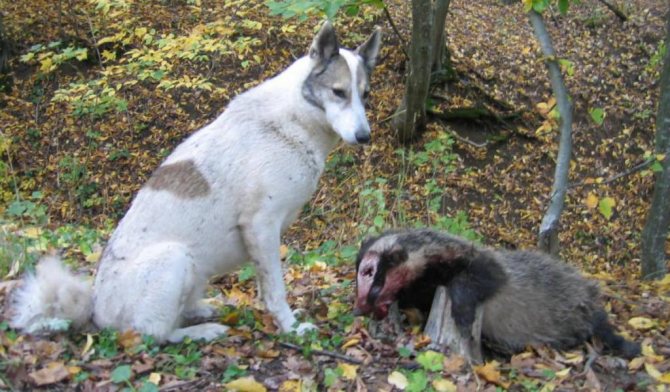
After this, you can begin training the husky on the badger. This animal is nocturnal; only at dusk does it go out to feed, making sure that there are no dangerous enemies nearby.
Badger training can be carried out as early as five months, preferably through a cage. It is arranged in such a way that neither the puppy nor the badger is harmed. At seven months they begin baiting in a clearing with a working female, controlling the process.
Using a non-contact method, you can accustom your puppy to the smell and sight of a badger as early as three months, but it is important not to let your husky get used to such an acquaintance.
Squirrel training
Usually this is the first animal on which husky training begins. The best period for hunting is late summer/early autumn. At this time, squirrels are actively engaged in storing supplies for the winter, so they often move along the ground, which means they leave a lot of traces, and it is easier for the hunter to howl on them. When meeting animals, a young dog’s hunting instinct should awaken. The main thing here is that the pet learns to follow the prey running through the trees and give a signal to the person with its voice. On your first trips to the forest, it is not recommended to use a gun - shooting an animal is not so important here. In general, it is necessary to give the husky greater freedom of action so that it independently understands how to behave. Stay at a distance, don't get closer. If there are not many squirrels in your area, then a young husky is paired with an experienced one as a form of training. By looking at a relative and adopting his habits, the “novice hunter” will quickly find his bearings. There are also artificial methods of training. For example, they tie the carcass of an already shot squirrel to a tree and lay an artificial trail. The dog's task is to find prey by smell and try to find it among the tree branches. The better the squirrel training is, the easier it will be for the husky when hunting faster animals, for example, marten or sable. Although these animals have a stronger smell, they are much more mobile.
Sable
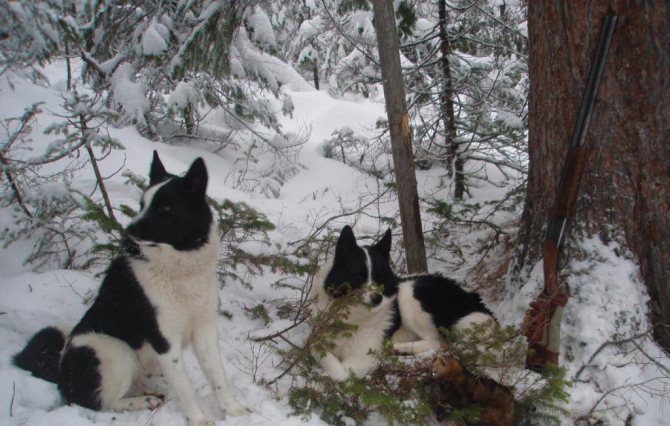
Laikas are often used when hunting birds. It is much more difficult to train and hunt a sable and a husky than a squirrel. The reason is that this animal, as soon as it feels persecution, strives not to lie low and hide, but to get away from the chase.
When hunting sable, it is important for a dog to learn how to “cut” the animal’s path at turns in order to catch up with it. The goal of the husky is to force him to jump onto the first tree he comes across, which is what the hunter needs, without allowing the sable to hide in rocky areas or mountains.
Training a husky on a sable should begin at the age of five to six months. It’s better at the beginning of winter, when its tracks begin to appear on the first snow. Ideally, go on your first hunt with an experienced dog, from whom the young husky will quickly learn and understand what is required of it.
During self-training, lead the puppy on a leash to a fresh track, and then, encouraging, encourage the pursuit of the animal. If the dog reacts weakly to the trail, you can follow it for several tens of meters on a leash, constantly ordering: “Look!” Soon the husky should pick up the trail and go in pursuit.
When the dog goes on an independent chase, it is best for the hunter to follow the animal’s trail as quickly as possible in order, if necessary, to correct the husky’s mistake if it goes astray. It is advisable to walk next to the footprint so as not to trample it. After the first success, stop training that day so as not to overtire the young dog.
Capercaillie
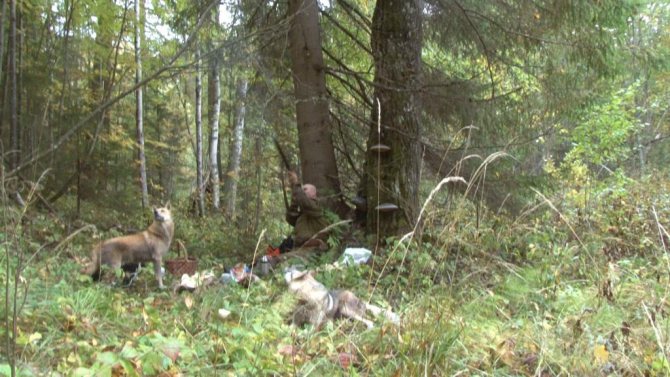
Experienced hunters note that training a husky to hunt a capercaillie is no fundamentally different from trying to teach it to hunt other upland game - hazel grouse, black grouse.
Training should begin with the beginning of the summer-autumn season, when the bird has not yet matured and is kept mainly by broods. Most often, having risen to the wing, they cannot fly far, noisily perching on nearby trees. Kluha, with her loud cackling, can only provoke the dog.
Remember that wood grouse at this time are located in old clearings, surrounded by forest on all sides, as well as along forest streams, in remote places where people rarely visit, but there is a lot of gonobobel, blueberries and lingonberries. You need to arrive early to hunt the game, no later than six o’clock in the morning, when the dew has not yet dried, the husky can easily catch the trace of the bird. At this time, the fat deposits should still be clearly visible on the trampled grass; the dog will become interested in them and begin to try to figure them out.
Approaching the bird, the young husky slows down, begins to bend down and sneak up, and then makes a sharp jump. The bird flies up, lifting the entire brood with it. Having flown a short distance, wood grouse sit down in the trees. After the birds take off, the husky begins to chase the wood grouse closest to it. Running up to the tree on which he will settle down, she takes a comfortable position and wags her tail or bursts out into a ringing and loud bark.
At this moment, the hunter is recommended to approach the head of the barking dog as quietly as possible, so that the bird, interested in the barking, looks at it and does not notice you. From a distance of about 25 meters you need to fire a shot while barking. A successful hit is the key to successful training and subsequent hunting with this dog. Cut off the paw from the first capercaillie caught using a husky and give it as a treat, one finger at a time in three doses.
Features of hunting with a husky
The material described above makes it obvious that the foundation for successful hunting with a husky is its careful selection at the beginning, and then the daily training of the dog. Raising a husky for hunting must include active, long walks between the owner and the dog. It is perfectly acceptable to include a human aid in the form of a bicycle or something similar. A novice hunter should also not be stingy when it comes to travel distances. Their long routes will be the key to the excellent development and health of a young dog.
As soon as the hunter goes through all the procedures for becoming a companion in the faithful ranks of game hunters, you can go on joint trips to hunt many animals. There is a division into several general groups for correct execution and obtaining a positive result at the end of execution.
Boar
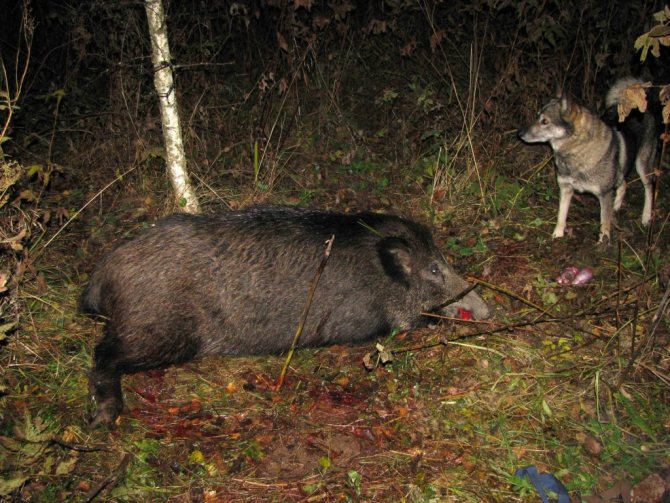
Laikas are dogs that are often used when hunting large animals. When hunting wild boar, huskies are considered the most preferred breed because they have viciousness, passion and fearlessness. West Siberian huskies, which have an exceptional dislike for pigs, are especially effective in hunting wild boar. But Karelian-Finnish and Russian-European huskies are more careful, which must be taken into account when going hunting.
It is recommended to start training huskies with wild boars at the age of eight months. It is recommended that from the age of 3 months you give him a piece of boar skin for playing. Games need to be structured in such a way that everything works out for him, the puppy should not be beaten, his aggressiveness should not be suppressed, and older dogs should not be allowed to offend him.
At 8 months of age, he must be brought to a hunted boar, allowed to sniff thoroughly, lick the blood, and be sure, like other dogs, to be given a piece of meat during cutting. At this stage you will be able to evaluate the dog's working qualities. If she immediately attacks the animal and begins to tear its bristles, then it will work well on a live boar. If the puppy is afraid of the wild boar, take him to the animal yourself and let him pet him. At this moment, her eyes should light up with anger and excitement. If the puppy remains fearful, it is better to immediately reorient it from the wild boar to other animals.
They go to the area for training on their own with a young dog to familiarize the husky with the tracks of a wild boar. From the age of 10 months, he can be taken on hunts, in which experienced huskies participate, who will teach the dog everything using a clear example.
At the baiting station, training begins at 10 months. The first lessons should not exceed a quarter of an hour, and there should be no cleavers in the enclosure. For the first time, it is enough for the dog to bark at the boar from a distance of five meters until it rushes at it. The dog must then chase him. If this does not happen, scare off the animal yourself and start the chase.
Boar training
This is perhaps the most difficult stage of training. Wild boar hunting is considered almost elite entertainment, and strict training is required from the dog. For example, she should not raise her voice if she follows the trail of a wild boar, otherwise there is a risk of scaring off the animal ahead of time. And secondly, the husky must be very patient, walking around a radius of up to 200-250 meters in search of prey. Again, when a wild boar is detected, the dog is required to vocalize. Moreover, the voice should be very angry and persistent. On the one hand, the hunter will understand that the target has been found. On the other hand, the boar himself will temporarily switch his attention to the dog and become vulnerable. True, it is possible that over time he will get tired of barking, and he will try to drive away the uninvited and noisy guest. In this case, the boar makes several lunges towards the husky, trying to hook it with its fangs, and the dog must be ready for this and be able to dodge.
It’s worth saying right away that not all huskies are suitable for boar hunting. The dog must be naturally very brave and angry. Everything else - search, viscosity - can be cultivated, but you cannot do without basic qualities. Therefore, when hunting wild boar, attention is often paid to heredity. And they try to take those puppies whose parents have proven themselves excellent in this field.
Young dogs begin to be accustomed to the smell of wild boar from childhood. For example, they use a piece of skin as a toy. And already at the age of 6-7 months, he needs to “get acquainted” with the animal itself - give him a piece of meat and the blood of a freshly shot wild boar. It’s better to start baiting in the enclosure. A good sign is when a husky barks at a wild boar at a distance of 3-5 meters. Don't get involved in this process and let the dog work in peace. Sooner or later the beast will try to attack your pet. If the husky jumps back and starts barking again, that’s good. If it gets scared and runs away, try to cheer up the husky and, together with it, scare away the animal. If the dog has the makings, then sooner or later the fear will pass. By the way, make sure that the wild boar does not injure your dog, and always keep a first aid kit with you. At the slightest damage, activities should be stopped and the wound treated. Once the husky begins to bark non-stop at the wild boar in the enclosure, skillfully dodge its attacks and even try to grab the animal, then the training is over. Now you can take it for real hunting.
Did you like it? Share on social networks!
We recommend reading
- Training a Labrador for Game Hunting
- Developing the hunting instinct of the shorthaired pointer
- Features of Jagdterrier training
- ← Developing the hunting instinct of the shorthaired pointer
- Boar Tamer →
Bear

You can start training a husky for a bear, as for any other large animal, right on the hunt. Please note that when hunting, the dog must be able to find a den, a wounded animal by following a bloody trail, and catch up with a leaving predator, stopping it with its grip. And having stopped, we bark to indicate to the hunter where to move.
Ideally, training should begin with getting to know the animal that has just been killed. Then you can go to the tied bear. It is better to start training with an 80 kg individual, which should be agile and mobile, able to fend for itself when attacked by annoying dogs.
To train, stretch a cable in a clearing between trees up to 50 meters long. Restrictors should be placed on it so that the bear cannot climb the tree. The bear is transferred to the training rope from the walking rope. The dogs must be in a place from which they cannot see this moment. Put the young dog on the trail by introducing him to it. First, walk along it on a leash for about 50 meters, and then let her down so that she can find the bear herself.
During the first training, it is allowed for the owner to be nearby, by his presence creating conditions that can prevent the dog from being frightened. In the future, you need to be on the sidelines so that the likes can be processed independently.
It is recommended to go on a real hunt not with one, but with several likes that have already worked well with each other.
Training huskies to bear
When training a husky for bear hunting, it is very important to develop in the dog such qualities as toughness, agility, pickup, viciousness, barking , and a courageous attitude towards the animal and its scent. Of particular value are those young huskies that, sensing the fresh trail of a rutting animal, immediately silently rush after it and, having caught up, rush at the bear with zeal and anger, initially showing the characteristics of husky bear cubs.
No less promising is the husky, which, having noticed a bear's trail, although timid and in a hurry, nevertheless, at the command of the owner, follows the animal and reaches it, starting to bark viciously. But it is necessary to wean the husky from vocalizing when a trace is detected when training a bear, since in this way she will only warn him about the chase, and he will immediately go in a different direction, making it no longer possible to get to the bear.
During the period of training a husky in natural conditions, the future bear cub must approach the animal confidently and boldly, making painful grips on the hind legs , butt, and gacha, thereby besieging the prey and stopping its progress. Next, the husky needs to be taught not to let the bear get up, barking at him from the head angrily and recklessly, and not to run away at his first attempt to get up and start defending. Laikas, which boldly follow the trail to the animal and bark at it excitedly without rushing into battle, can be used for den hunting when the bear has lain down for the winter. It will be enough to train such huskies to search for a den, raise and deliver the animal, and then all the initiative passes to the shooters.
To get a good bear cub, you need to train a husky to rush at the animal with bared teeth and in pairs - in order to manage to inflict several painful grips in just one throw, which will force the bear to take a defensive position, without even thinking about attacking. Constant barking with grips on pressure points forces the animal to spin around in one place all the time, covering itself from an attack by dogs, and allows the shooter to quietly get to a distance sufficient for a shot in order to conduct aimed fire. Often, aggressive and vicious huskies working in tandem bring the bear to such a state that it simply roars and spins powerlessly, protecting its butt, gacha and hind legs.
Author: Elena Tikhonova
Article protected by copyright and related rights. When using or reprinting material, an active link to the men's magazine manorama.ru is required!
Wolf.
Elk
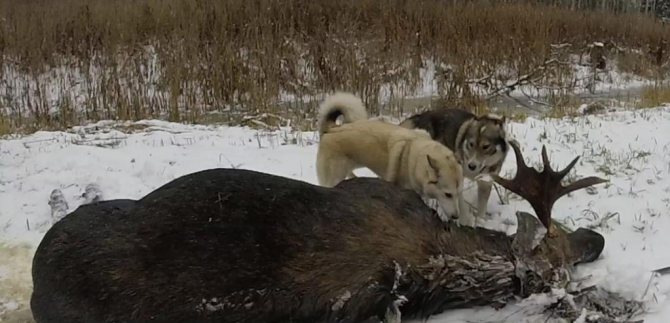
According to the advice of hunters, training a husky to hunt an elk should be done when the dog has already mastered bear hunting. In this case there will be no problems. The main qualities that a dog must have are the ability to dodge the beast and move quickly.
Now we will tell you how to train a husky to ride a moose. It is better to start in the fall or early spring, when there is no snow on the ground yet, but it is already quite cool. Ideally, go to the mountains, because then it will be easy for a husky to run on frozen ground, but a moose, like any ungulate animal, will not be able to run away quickly.
For the first time, it is recommended to choose a weaker object. At this age, the dog must be quite mature, because it will have to not only pick up the scent of the prey, but also chase it, which will require significant physical effort. The hunt itself consists of the dog tracking the animal and then starting to chase it. As a rule, the chase ends with the artiodactyl itself coming out to the hunter, who shoots him. The very first prey in your husky’s life must be killed, and the pet must be praised by feeding it well.
In another option, the dog must drive the prey to the so-called “slop”, that is, a place from where the elk can no longer escape. For example, it could be a rock ledge. The hunter then approaches and calmly kills the prey. Using a similar technology, huskies are sent to hunt mountain sheep, deer and other ungulates.
Moose training begins when the husky turns two years old. It is best to send a young husky hunting with an experienced dog. Be prepared for the fact that not all huskies have the natural talent for tracking elk, and not all have the necessary qualities. The very first lessons will help you answer the question of whether this particular pet is worth training for a moose or abandoning this idea. If you are not sure whether your husky behaves correctly upon first contact with a moose, record everything on video and show it to experienced professionals. They will be able to give an objective assessment of your dog’s capabilities and advise which animals are best to go with it to hunt.
Training a husky hunter
After the dog has completed an obedience course and has learned how to use a clicker, if the owner so desires, it is time to begin hunting practice. Usually, young dogs are trained by the example of older ones: they simply take the puppy on a hunt, in which trained, experienced huskies are already taking part.
You need to train a husky from a small animal, preferably a squirrel or bird - black grouse, wood grouse. In addition to the fact that it is completely safe for a young dog, during such a hunt you can evaluate the puppy’s hunting qualities: voice, viscosity, search skills. Experienced hunters advise: if the dog has successfully discovered the prey and pointed it out to the owner by barking, it is necessary to shoot the found animal or bird in order to clearly demonstrate to the dog the fruits of its work. In addition, this way the husky will be able to recognize the smell of prey from an extremely close distance and remember it.
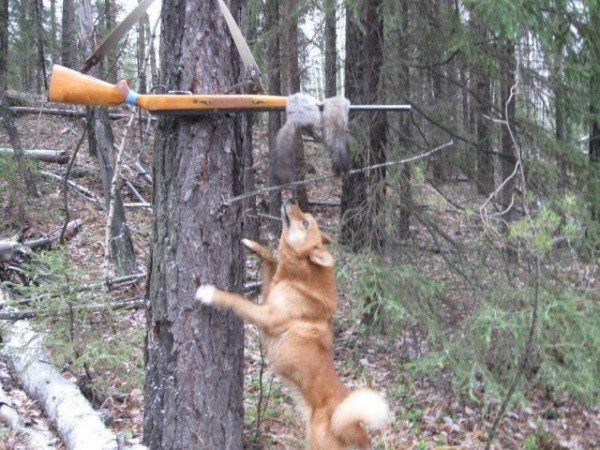
Squirrel hunting results
For a hunt where the trophy should be a larger animal - a wild boar, bear or elk, you can only take an adult and mature dog. Usually, huskies are taken for “serious” hunting when they are one and a half to two years old. Until this moment, you can take the dogs into the forest, but not allow them to participate in the process. Young huskies are shown carcasses of killed animals, observing the reaction. If a dog is afraid of even dead prey, bouncing away from it, then you should not even try to teach it to track and drive a living animal.
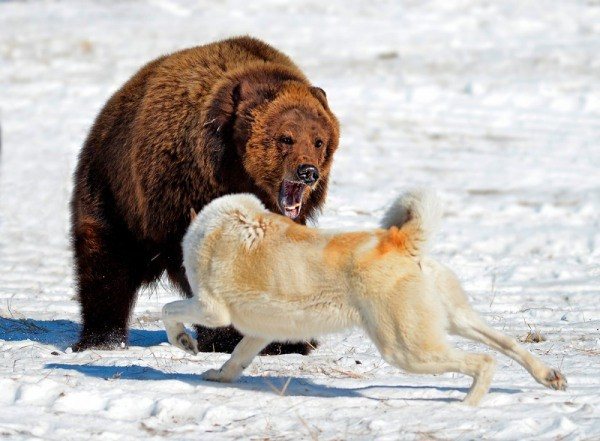
Not every dog can cope with a large predator
Important point! The dog should not try to kill the animal - its task is to detain and distract the animal until the hunter arrives. Therefore, the husky needs to be taught to take care of itself, not to rush directly into the teeth or claws of a predator, and not to expose itself to powerful horns and hooves.
It is also worth considering that hunting big game usually involves having several dogs. Either several hunters with their pets will participate in the event, or one person will take several dogs out into the wild. Therefore, the husky must be able to work in a group - this skill can only be developed through practice.

Most often, likes work in pairs
Large hunting farms often have their own baiting stations - special areas where dogs are “introduced” to the game. Note that with proper organization, huskies are never allowed to injure the animal. The main task of baiting activities is to show the dog a large wild animal at close range, to give the dog the opportunity to follow the habits of the prey, to see how the animal moves, what sounds and smell it makes, and how it behaves.
Typically, wild animals are assigned a fairly large fenced area so that huskies can first detect and track the animal, and only then drive it in and call out while waiting for the owner.
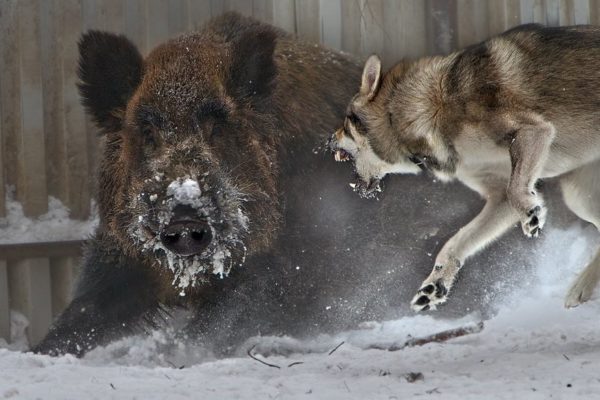
Cleaver at the baiting station
Experienced specialists supervise the work of the dogs, and the owner must always be ready to give a prohibiting command if his pet gets too excited. Please note that experienced dogs who regularly attend hunts are not brought to the baiting stations - these practical classes are intended for young dogs whose first trip is still ahead.
